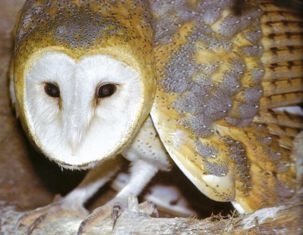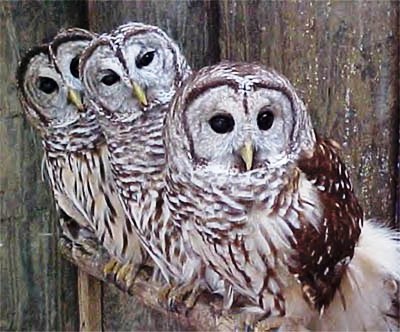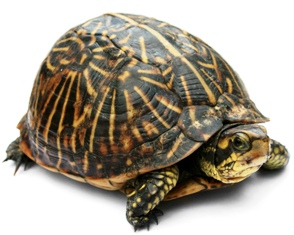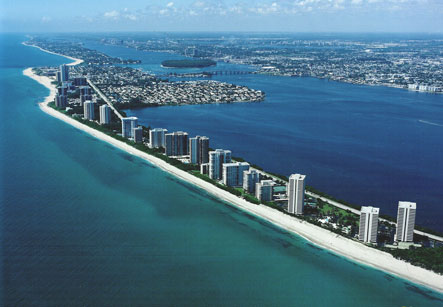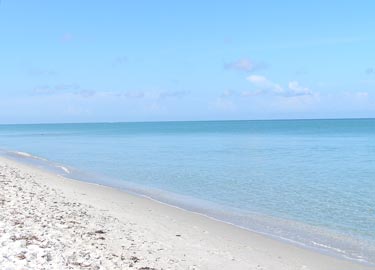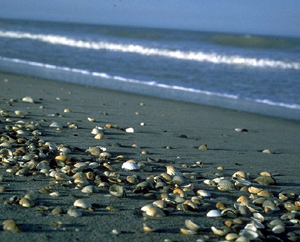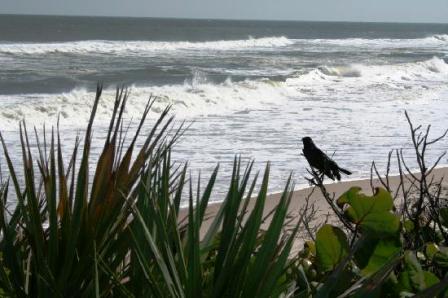Owls are a common bird in Floridian nature. They come in a variety of sizes and help keep area rodents in check. Five species of owls call Florida home and include the screech owl, barn owl, barred owl, horned owl and burrowing owl.
The barn owl (Tyto alba) is found throughout the state
of Florida and inhabits hardwood and tropical hammocks, urban areas with
abundant palms and large hardwoods, and manmade structures such as
silos, barns, and deserted buildings. Barn owls forage voraciously for
rodents in open areas such as prairies, pastures, fields, and sparsely
wooded areas. Barn owls in Florida breed from March through July and
nest in secluded places like caves, barns, tree cavities, and large bird
houses. They build no actual nest and lay from 3-11 (most commonly 5-7)
white or buff-white eggs. Many people attract barn owls by erecting nest
boxes in an effort to control local rodent populations
The Barred Owl is a medium-sized gray-brown Owl streaked
with white horizontal barring on the chest and vertical barring on the
belly. They are round-headed with a whitish/brown facial disk with dark
brown trim. The eyes are brown, and the beak is yellow and almost
covered by feathers. They have a long tail. There is no difference in
plumage between males and the larger females. A very opportunistic
hunter, a Barred Owl can sometimes be seen hunting before dark. This
typically occurs during the nesting season or on dark and cloudy days. A
Barred Owl will use a perch, from where it dives upon its prey - meadow
voles are its main prey, followed by shrews and deer mice. Other mammals
include rats, squirrels, young
rabbits, bats,
moles,
opossums,
mink, and
weasels. Birds are taken occasionally, including woodpeckers, grouse,
quail, jays, blackbirds, and pigeons. They also eats small fish,
turtles, frogs, snakes, lizards, crayfish, scorpions, beetles, crickets,
and grasshoppers. Birds are taken as they settle into nocturnal roosts,
because they cannot catch birds on the wing. They will also swoop down
to the water's edge to catch frogs, other amphibians, and occasionally
fish. Barred Owls are attracted to campfires and lights where they
forage for large insects. Prey is usually devoured on the spot.
For more information on Florida owls be sure to visit FloridianNature.com
Thursday, July 26, 2018
Wednesday, July 18, 2018
Florida turtles
The loveable, slow-moving Gopher Tortoise is famous for digging underground burrows 10 to 35 feet long with "bedrooms" at the ends. The burrows are found in sandy well drained areas through out Florida. In good weather, the tortoise emerges from its burrow to browse on low-growing vegetation, including leaves, grass and wild fruits. Over seventy other kinds of animals have been found using the state protected Gopher Tortoise burrows in various ways. These include burrowing owls, raccoons, opossums, gopher frogs, spiders, insects, cotton rats, indigo snakes, and rattlesnakes.
The Florida Box Turtle is an attractive turtle that has been used a a children's pet. It spends most of its time wandering through woods, fields, and gardens, but it will occasionally soak itself in water. A small to medium sized turtle, the Florida Box Turtle is one of the well known subspecies of eastern box turtle. In both appearance and color it is unlike its northern cousin the Eastern Box Turtle. It can be quickly identified by the almost black background to its elongated shell with the back of the shell flaring out. Box turtles have a highly domed carapace (upper shell) and a hinged plastron (bottom shell) that can be completely shut to keep out predators. These characteristics contribute to this turtle's descriptive name, 'box turtle'. The Florida Box Turtle feeds on different types of invertebrates, insects and plant matter. This species of box turtle seems to be very carnivorous even as adults. Males are slightly larger on average than females, the posterior lobe of their plastron is concave, and the claws on their hind legs are short, thick, and curved. Males also have thicker and longer tails. Females' rear claws are longer, straighter, and more slender, and the posterior lobe of their plastron is flat or slightly convex. Males have red irises and females have yellowish-brown irises.
Thursday, July 12, 2018
Florida Coastline
Florida has a longer coastline facing the Gulf of Mexico than the Atlantic Ocean. With 580 miles along the Atlantic Ocean and 770 miles along the Gulf of Mexico the state of Florida has a total of 1,350 miles of coastline! Florida is a water wonderland with it's pristine rivers and lakes, the Gulf of Mexico, Atlantic Ocean coastline, and it's mixtures of brackish backwaters. As you may know, Florida has some of the best beaches in the world. No matter where you are in Florida, there is a beach just a short drive away.
The waters from Fort Myers through Pine Island Sound and Charlotte Harbor have to be one of the most diverse boating and fishing locations anywhere in the world. Pine Island Sound is bounded on the west by Sanibel, Captiva and North Captiva Islands. Hundreds of islands dot the Sound; redfish, snook, pompano and speckled trout delight the patient angler. To the east, Pine Island's mangrove shorelines, tidal creeks and oyster bars still resist the crush of development. Explore Matlacha, Pineland and Bokeelia for a taste of the real Florida, where Calusa Indians farmed and fished 1,000 years ago.
Monday, July 2, 2018
Florida Nature: Canaveral National Seashore
The Canaveral National Seashore and the Merritt Island Wildlife Refuge are
located midway on Florida’s east coast between Daytona Beach and
Melbourne. The history of Merritt Island extends from prehistoric times
to the space age! Inhabited by Indians since about 7000 B.C., the island
in recent years has rocketed to the site of Cape Canaveral, with which
the refuge and seashore share a border. The National Park Service
protects ten National Seashores in the United States. Canaveral National
Seashore is a step into the past, protection for the present, and a
doorway into the future. The 100
Timucuan Mounds that are
within it's boundaries are evidence of past generations of people that
lived here. Canaveral National Seashore covers 57,000 acres and the 24
mile stretch of undeveloped beach is the longest stretch on Florida's
east coast. Fourteen endangered species make their home within
Canaveral's boundaries. Kennedy Space Center owns the land that is
managed by the National Park Service and Merritt Island National
Wildlife Refuge. Joint efforts of three agencies protect it from
development and preserve the history, the wildlife and the diverse
habitats.
The
Wildlife refuge can be explored by car along two nature drives or by
foot via two short hiking trails. Either way the range of wildlife is
stunning. Many of the 250 bird species that have been observed here make
their nests on the refuge, including
great blue herons, snowy egrets,
turkey vultures, pi-billed grebes and the
rare black skimmers.
The refuge is also home to nineteen endangered species, most notably the southern bald eagle and the brown pelican. Porpoises, manatees, and whales are occasionally glimpsed offshore. Canaveral National Seashore serves as an important nesting area for sea turtles.
The refuge is also home to nineteen endangered species, most notably the southern bald eagle and the brown pelican. Porpoises, manatees, and whales are occasionally glimpsed offshore. Canaveral National Seashore serves as an important nesting area for sea turtles.
Subscribe to:
Posts (Atom)
